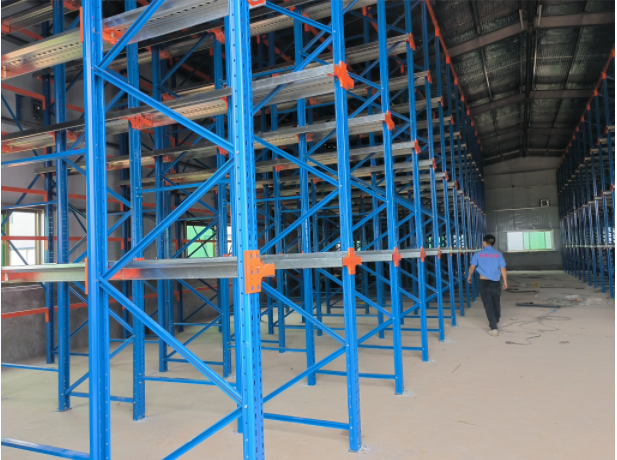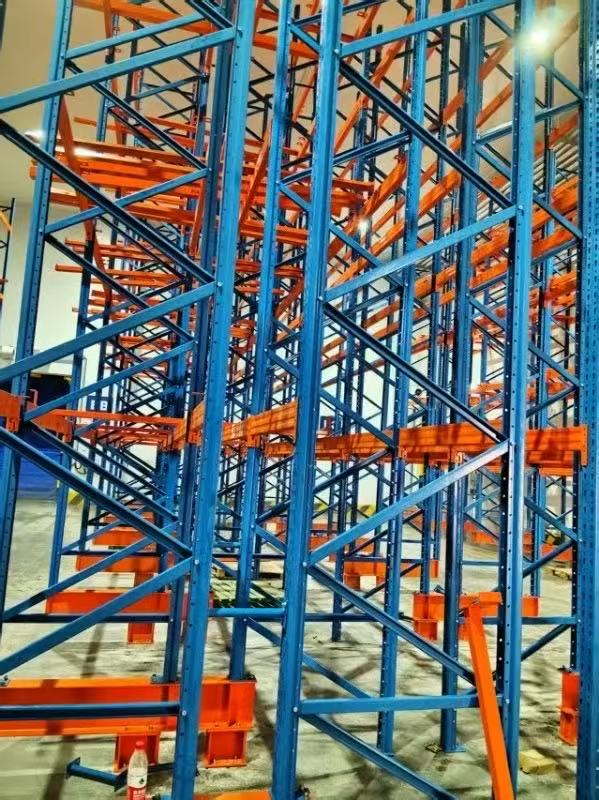If you’ve ever searched for “pallet racking wanted,” you’re likely in the process of upgrading, expanding, or setting up a new warehouse storage system. You're not just looking for any shelving; you're searching for a robust, efficient, and scalable solution that can handle your inventory, optimize your space, and improve operational workflow. This article will guide you through everything you need to know about pallet racking systems, related equipment like the pallet truck, and key considerations for effective pallet storage.

At its core, pallet racking is a material handling storage system designed to store materials on pallets (or skids). Unlike simple shelving, these systems are engineered to support heavy weights and maximize vertical space utilization in a warehouse. The term "pallet rack" is often used interchangeably with pallet racking, referring to the individual frames and beams that create the storage structure.
A typical racking system in warehouse environments is the backbone of logistics and inventory management. It allows for organized storage, easy access to goods (via methods like FIFO or LIFO), and can be customized to fit specific product dimensions and weights. Whether you're storing small parts or large, bulky items, there's a pallet storage solution designed for your needs.
A successful warehouse operation relies on more than just upright frames and beams. Here are the integral parts of a comprehensive storage system:
Upright Frames: The vertical components that are anchored to the floor. They feature punched holes or hooks to connect to the horizontal beams.
Beams: The horizontal bars that connect between uprights to support the load. They are available in various step heights and load capacities.
Wire Mesh Decking: Often placed on the beams to provide a safe surface for pallets to rest on and to prevent items from falling through.
Pallet Supports: Bars that provide additional support for the pallets when decking isn’t used.
Row Spacers & Braces: Structural components that connect back-to-back rows and add stability to the entire racking system in warehouse setups.
Shims: Used to ensure the structure is level, especially on uneven floors.
Safety Pins & Locking Devices: Critical for securing beams to uprights, preventing accidental dislodgement.
No system is complete without the equipment to move goods. This is where the indispensable pallet truck comes in. Also known as a pallet jack, it is a hand-powered tool used to lift and move pallets within the warehouse, serving as a vital link between the loading dock and the pallet rack.
When you put out a notice that "pallet racking is wanted," it's crucial to know what type you need. The right choice depends on your inventory profile, budget, and operational goals.
Selective Pallet Racking
This is the most common and versatile type of pallet racking. It provides direct access to every pallet, making it ideal for warehouses with a high variety of SKUs. While it offers excellent selectivity, it can use more aisle space compared to other systems.
Drive-In/Drive-Through Racking
Designed for high-density storage of homogeneous products, this system allows forklifts to drive directly into the rack structure to place and retrieve pallets. It’s perfect for cold storage or storing large quantities of the same product but operates on a LIFO (Last-In, First-Out) basis.
Push Back Racking
A high-density system that stores pallets on nested carts on inclined rails. When a new pallet is loaded, it pushes the existing pallets back. It operates on a LIFO basis and is excellent for multiple SKUs with medium to high volumes.
Pallet Flow Racking
This system uses a dynamic flow of pallets on inclined rails with wheels or rollers. Powered by gravity, pallets move from the loading end to the unloading end. It’s a high-density, FIFO (First-In, First-Out) system ideal for perishable goods or products with expiration dates.
Cantilever Racking
For storing long, bulky, or irregularly shaped items like lumber, pipes, or furniture, cantilever racking is the solution. It features arms that extend from a central column, eliminating the need for front columns for unobstructed access.

While investing in a great racking system in warehouse planning is vital, its efficiency is nullified without the right equipment to interface with it. The humble pallet truck is a workhorse in material handling.
There are two primary types:
Manual Pallet Truck: Operated by hand, perfect for lighter loads and shorter distances. It’s a low-cost, essential tool for any warehouse.
Electric Pallet Truck (Powered Pallet Jack): Battery-powered to assist with moving heavier loads over longer distances with significantly less operator effort and fatigue.
Integrating the right pallet truck into your workflow reduces the time it takes to put away or pick items from your pallet rack, directly boosting productivity and reducing the risk of operator injury.
Effective pallet storage is a science. It’s not just about stacking things high; it’s about doing it smartly and safely. Here’s how to optimize your setup:
Conduct a Thorough Inventory Analysis: Understand your SKU velocity (fast vs. slow movers), dimensions, and weights. This will dictate the type of pallet racking you need.
Maximize Cube Space: Utilize the full vertical height of your warehouse. The higher you can safely go, the more floor space you save.
Implement a Logical Layout: Place high-turnover items in the most accessible areas (often the "golden zone" between knee and shoulder height) to minimize travel time for the pallet truck.
Prioritize Safety: Ensure aisles are wide enough for equipment to maneuver safely. Install column guards, end-of-aisle guards, and ensure proper load signage.
Consider Future Growth: Your pallet storage needs will change. Choose a scalable and adaptable racking system in warehouse design that can be reconfigured or expanded as your business evolves.
Even the best systems face issues. Being aware of these common problems can save you from costly downtime, accidents, and product damage.
1. Improper Installation or Assembly
One of the most critical failure points is incorrect installation. Beams not fully seated or pinned, unlevel frames, and improperly tightened bolts can lead to catastrophic collapse.
Solution: Always use a certified and experienced installer. After installation, conduct a thorough inspection.
2. Overloading
Every pallet rack is designed with a specific maximum load capacity per level. Exceeding this capacity is extremely dangerous.
Solution: Clearly label the load capacity on every beam level. Train all warehouse staff on these limits and enforce strict adherence.
3. Forklift Damage
Daily operations inevitably lead to occasional impacts from forklifts. Even minor damage to upright frames can significantly reduce the system's overall structural integrity.
Solution: Implement mandatory forklift operator training. Install protective equipment like guard rails and post protectors. Conduct regular inspections to identify and repair damage immediately.
4. Poorly Secured Loads
Unstable loads on pallets can shift and fall, creating a hazard for personnel and potentially striking the rack structure.
Solution: Use stretch wrap or banding to secure all loads properly before placing them into storage. Ensure pallets are in good condition.
5. Neglecting Regular Inspections
Out of sight, out of mind. Many warehouse managers only think about their racking system in warehouse logistics when a problem is obvious.
Solution: Implement a formal, regular inspection program. This should include daily visual checks by operators and documented quarterly inspections by a designated safety officer or a qualified rack inspector.
6. Using Incompatible or Non-Rated Components
Mixing beams and frames from different manufacturers or systems can be perilous. Components are engineered to work together as a system.
Solution: If you need to expand or replace parts, source them from the original manufacturer or a certified supplier that guarantees compatibility.
Your search for "pallet racking wanted" should be methodical. Don’t just choose the cheapest option; choose the smartest one.
Assess Your Needs: Before you contact suppliers, have your inventory data, warehouse dimensions, and growth projections ready.
New vs. Used: Consider the pros and cons. New systems come with warranties and engineering certifications. Used pallet racking can be a cost-effective alternative but must be thoroughly inspected for damage and compatibility.
Consult with Experts: Reputable suppliers and installers can provide invaluable advice on the best type of pallet storage system for your specific application.
Think Total Cost of Ownership: Factor in not just the purchase price, but also installation, ongoing maintenance, potential expansion costs, and the efficiency gains a well-designed system will bring.
The quest that begins with "pallet racking wanted" is about much more than just acquiring metal beams. It's about investing in the foundational infrastructure that will drive your warehouse's efficiency, safety, and scalability for years to come. By understanding the different types of pallet racking systems, the vital role of the pallet truck, and the principles of optimal pallet storage, you are equipped to make an informed decision. Remember to prioritize safety through diligent practices, regular inspections, and proper training. A well-planned racking system in warehouse environments is not an expense; it’s a strategic investment that pays daily dividends in streamlined operations and protected inventory.
 Wechat
Wechat
 Whatsapp
Whatsapp